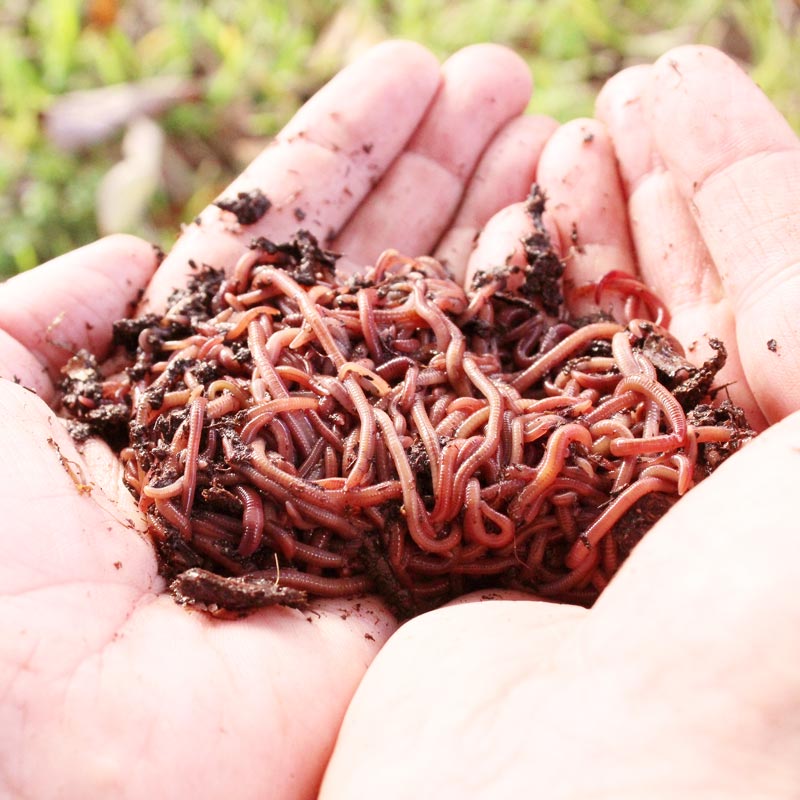Keep Your Lawn Green and Healthy with Expert Advice from Lake Hickory Bait
Keep Your Lawn Green and Healthy with Expert Advice from Lake Hickory Bait
Blog Article
Red Wigglers: The Unsung Heroes of Organic Waste Recycling
Red wigglers, or Eisenia fetida, act as vital agents in the organic waste recycling procedure, transforming discarded materials right into valuable vermicompost. Their efficient failure of raw material not only enhances soil top quality but additionally contributes to sustainable waste management techniques. As the world progressively seeks services to deal with waste build-up and enhance farming performance, comprehending the function of these worms becomes vital. What devices permit them to prosper in compost environments, and exactly how can they be effectively utilized in both household and business settings? Checking out these questions reveals the more comprehensive ramifications of vermicomposting in our eco-friendly landscape.
What Are Red Wigglers?
The remarkable strength of red wigglers, scientifically referred to as Eisenia fetida, highlights their essential duty in organic waste recycling. These tiny, reddish-brown earthworms are typically discovered in disintegrating organic issue, such as compost heap and manure lots. Lake Hickory Bait. Unlike other earthworm varieties, red wigglers thrive in nutrient-rich settings and are highly effective at breaking down organic products, making them necessary for vermicomposting

(Red Wiggler Express)Along with their duty in waste decrease, red wigglers add to dirt health by improving soil structure and aeration via their delving tasks (Lake Hickory Bait). Their presence in composting systems not only enhances disintegration prices yet also promotes a sustainable approach to lose monitoring, highlighting their importance in ecological conservation initiatives
Advantages of Composting With Worms
Composting with worms, specifically red wigglers, supplies countless benefits that enhance both waste management and soil health. First, these worms efficiently break down organic waste, converting it right into nutrient-rich vermicompost that enhances dirt. This procedure speeds up decay, enabling for a much faster recycling of kitchen scraps and various other natural products compared to traditional composting approaches.
In addition, the vermicompost created by red wigglers is including useful bacteria, which help improve dirt framework, oygenation, and dampness retention. This boosts the general health of plants, advertising vigorous development and raised returns in gardens and farming setups. Moreover, the use of worms in composting reduces the manufacturing of greenhouse gases, such as methane, adding to a much more lasting waste management system.

Just How to Start Vermicomposting
Establishing a vermicomposting system is an uncomplicated procedure that can yield considerable benefits for both waste management and dirt enrichment. To start, select an appropriate container, such as a plastic container or wood box, with adequate ventilation holes to make certain appropriate air movement. The measurements need to preferably be about 2 feet by 3 feet, allowing ample space for the worms to thrive.
Next, prepare bedding material, which can include shredded newspaper, cardboard, or coconut coir. This bed linen ought to be moistened to develop a suitable environment for the worms. When the bed linen remains in location, introduce red wigglers (Eisenia fetida) into the bin, usually around one pound of worms for every square foot of surface.
Complying with the placement of worms, add natural waste, such as fruit and vegetable scraps, coffee grounds, and crushed eggshells. Stay clear of including dairy products, meat, or oils, as these can create smells and draw in bugs. Ultimately, position the bin in a shaded, temperature-controlled location to preserve optimal conditions for worm activity. With these actions, you will effectively launch a vermicomposting system that adds to sustainable waste management and enriches your dirt.
Keeping a Healthy And Balanced Worm Container
(Red Wiggler Express)Keeping a worm bin thriving requires regular interest and like guarantee the health of the red wigglers and the effectiveness of the composting procedure. Appropriate upkeep begins with checking the moisture levels; the container ought to perspire but not soaked. A great regulation of thumb is to preserve an uniformity similar to a wrung-out sponge.
Gently mixing the bed linens and food scraps every few weeks avoids compaction and guarantees that all worms have access to oxygen. Furthermore, it is important to feed the worms suitably.
If the bin comes to be too hot or cold, the worms may become stressed out. By vigilantly taking care of these elements, one can keep a robust and efficient worm container.
Influence On Sustainable Living
The effective upkeep of a worm container not only profits the wellness of red wigglers yet additionally contributes substantially to lasting living methods. By reusing natural waste, such as cooking area scraps and yard debris, red wigglers assist draw away significant quantities of product from garbage dumps. This reduction in waste not only reduces greenhouse gas discharges yet additionally reduces the ecological worry associated with waste monitoring.
Furthermore, the spreadings produced by red wigglers function as a nutrient-rich natural plant food, improving dirt health and promoting plant growth. This all-natural alternative to chemical plant foods sustains sustainable agriculture and gardening practices, reducing reliance on artificial inputs that can hurt environments. In addition, worm composting promotes recognition of waste management, urging individuals and communities to take on even more sustainable habits.

Conclusion
In summary, red wigglers work as vital contributors to natural waste recycling via their effective decomposition of organic materials. Their capacity to generate nutrient-rich vermicompost improves dirt wellness and sustains lasting agricultural practices. By integrating vermicomposting right into waste administration techniques, individuals and communities can substantially minimize waste while promoting environmental sustainability. The role of Eisenia fetida in promoting healthy and balanced ecological communities highlights the value of these microorganisms in attaining lasting living and boosting soil fertility.
Report this page